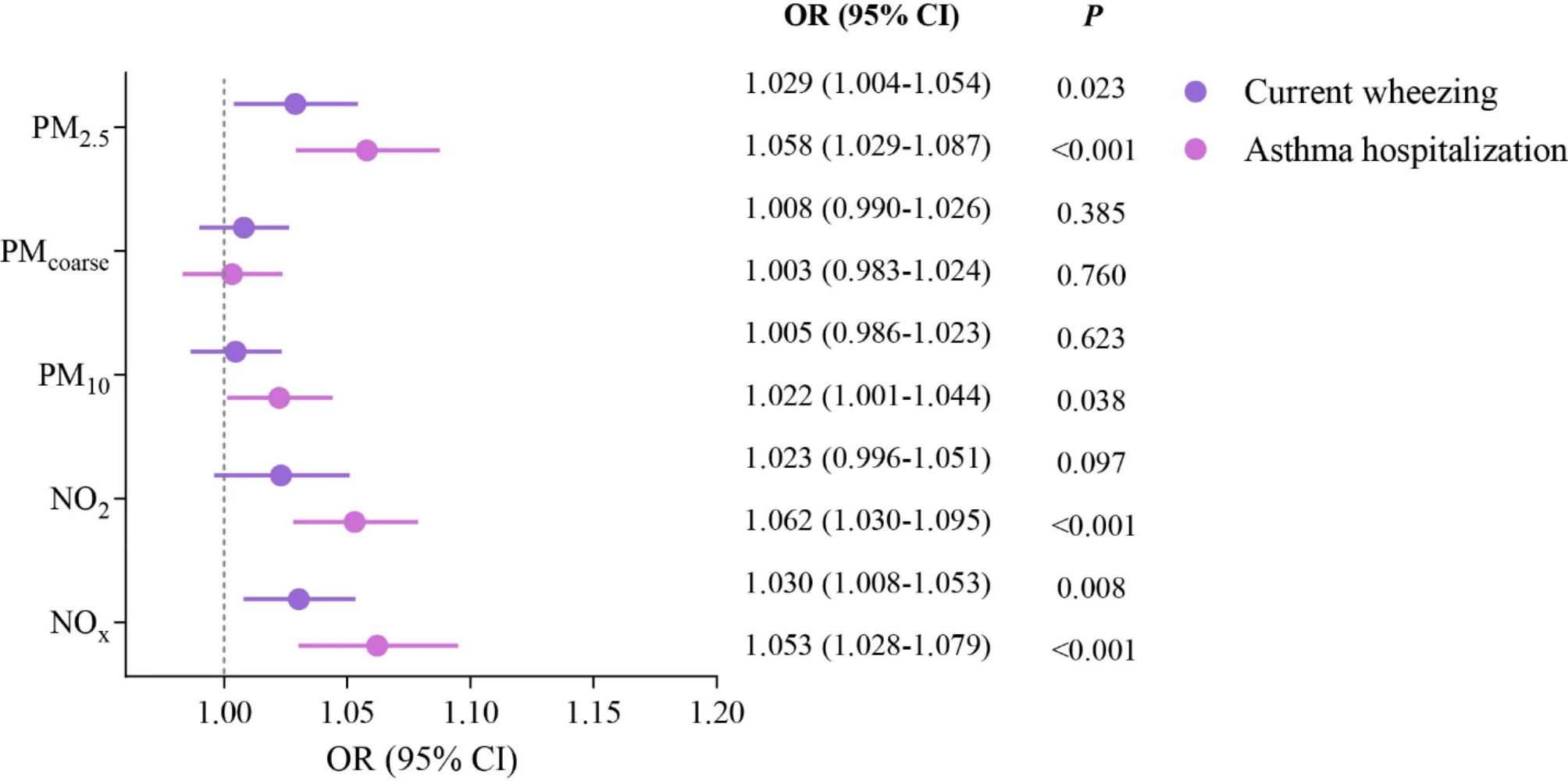
Cheng, J., Liu, Z., Li, D. et al. Sci Rep 15, 11347 (2025). https://doi.org/10.1038/s41598-025-88807-6
Abstract

Ambient air pollution affects the respiratory system, but evidence of its impacts on asthma and lung function is lacking. We aimed to evaluate whether ambient air pollutants are associated with asthma prevalence, asthma outcomes, and lung function in adults. A cross-sectional study of 454,921 adults aged 37 to 73 years from the UK Biobank was performed with linear or logistic regression to assess the associations among air pollution and asthma prevalence, current wheezing, asthma hospitalizations and lung function. Each interquartile range (IQR) increase in of PM2.5 (odds ratio [OR]: 1.023, 95% confidence interval [CI]: 1.011–1.035), PM10 (OR: 1.013, 95% CI: 1.004–1.022), NO2 (OR: 1.025, 95% CI: 1.013–1.039), and NOx (OR: 1.019, 95% CI: 1.008–1.029) was significantly associated with asthma prevalence, respectively. Moreover, exposure to air pollution was related to increased odds of current wheezing and asthma-related hospitalization. Among asthmatic participants, each IQR increase in PMcoarse, PM10, NO2, and NOx was significantly associated with decreases of 5.143 ml, 7.614 ml, 13.266 ml, 9.440 ml, respectively, for the forced expiratory volume in one second and 11.744 ml, 15.637 ml, 13.041 ml, 9.063 ml, respectively, for the forced vital capacity. In a large sample size study of British adults, air pollution was related to increased odds of asthma prevalence. Among the asthmatic population, air pollution was associated with increased odds of current wheezing, hospitalization, and decreased lung function.
